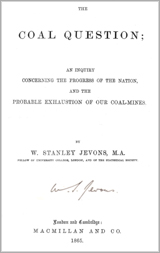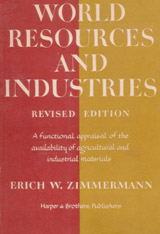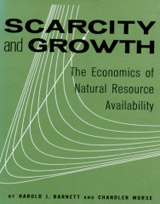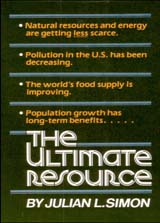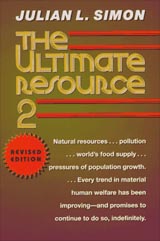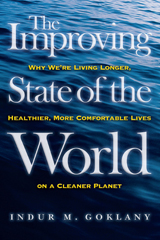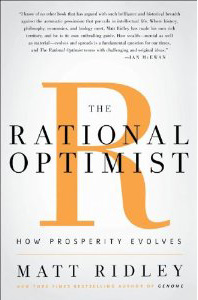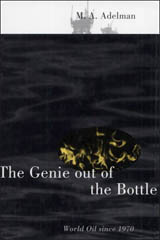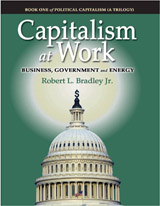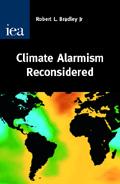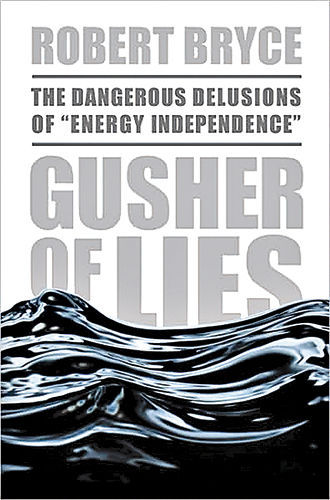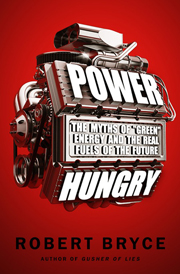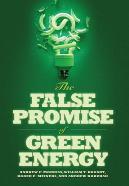A free-market energy blog

The Intellectual Roots of Paul Ehrlich's The Population Bomb (and the pre-prehistory of climate alarmism)
[Editor note: Pierre Desrochers, who guest posts with us for the first time, is Associate Professor of Geography at the University of Toronto.]
Paul Ehrlich’s best-seller The Population Bomb turned 40 last year. The latest issue of the peer-reviewed (and somewhat iconoclastic)Electronic Journal of Sustainable Development is devoted to the book, its impact, and the validity of its main message. It features contributions by both Paul and Anne Ehrlich, who mostly stand by their original analysis, and some of their critics who challenge their basic premise and supportive evidence.
Despite a now widespread popular perception that The Population Bomb was a pioneering work, it originally drew little attention. In fact, it was just the latest in a long line of books, reports, essays and pamphlets on the population issue published in post-World War II America.
Ehrlich’s success, it turns out, owed more to his alarmist rhetoric and a lucky break on Johnny Carson’s “The Tonight Show “ (on which he would eventually appear several times) than to any original insight or idea.
The real roots of what is sometimes referred to as modern “neo- Malthusian ecology” in the United States long predates the Stanford’s biologist contribution. It can be ultimately traced back, at least in terms of reaching a large popular audience, including a young Paul Ehrlich himself, to two now largely forgotten best-sellers published in 1948: Fairfield Osborn’s Our Plundered Planet and William Vogt’sRoad to Survival.
Following important promotional efforts that included selections in popular book clubs, Our Plundered Planet had already been reprinted eight times by the end of the year in which it was published and was eventually translated into thirteen languages. For its part, Vogt’s book was translated into nine languages, while a condensed version (eventually translated into eleven languages) was published in Readers’ Digest. According to one estimate, it eventually reached between twenty and thirty million individuals and was the biggest environmental best-seller of all time until the publication of Rachel Carson’s Silent Spring in 1962.
William Vogt’s best-seller, Road to Survival, in turn, profoundly trouble and inspired the businessman Hugh Everett Moore to write and publish in 1954 a twenty-two page pamphlet, “The Population Bomb!” (Moore would later give Ehrlich permission to use his original title.) So influential was Vogt, Moore and other overpopulation activists’ crusade that the issue even graced thecover of Time magazine in 1960.
Cover of Time Magazine, January 11, 1960
Conclusion
The Malthusian scares of recent decades (mineral depletion, pollution, climate change) can be better understood in terms of a longer (falsified) record. Robert Bradley’s Capitalism at Work: Business, Government, and Energy, containing an excellent five-chapter history of Malthusianism from Malthus through Simon (see below), did not include the Osborn/Vogt link between Malthusianism and neo-Malthusianism. The current issue of EJSD fills that gap.
Appendix A: Electronic Journal of Sustainable Development
Volume 1, Issue 3: “The Population Bomb Four Decades On”
CONTENTS
Editorial
The Persistence of Population Pessimism, Julian Morris
Editorial
The Persistence of Population Pessimism, Julian Morris
ArticlesThe Population Bomb Revisited, Paul R. Ehrlich and Anne H. Ehrlich
Have increases in population, affluence and technology worsened human and environmental well-being? Indur Goklany
Population Growth, Increases in Agricultural Production and Trends in Food Prices, Douglas Southgate
Julian Simon and the “Limits to Growth” Neo-Malthusianism, Paul Dragos Aligica
Land Conflict and Genocide in Rwanda, Karol Boudreaux
The Post War Intellectual Roots of the Population Bomb, Pierre Desrochers and Christine Hoffbauer
Population Growth and Cities, Randal O’Toole
Review EssayReview of “Fatal misconception: the struggle to control world population” by Matthew Connelly (Harvard University Press, 2008), by Heli Kasanen
Appendix B: Bradley History of Malthusianism/Neo-Malthusianism
Part III: Energy and Sustainability
Chapter 7: MalthusianismFrom “Misery or Vice” to “Moral Restraint” [T. R. Malthus]
“The Coal Panic” [W. S. Jevons]
Energy Sustainability: First Views
Anatomy of a False Alarm
Second-Generation Alarm [Herbert Stanley Jevons]
U.S. Coal: From Plenty to ProblemsChapter 8: A Joined Debate“Resources are Not, They Become”: Erich Zimmermann
The Calculus of Depletion: Harold Hotelling
Zimmermann Stalls Out
Hayek on Conservation
Paley Commission
Resources for the Future
An Eye Trained on Scarcity: M. A. AdelmanChapter 9: Neo-MalthusianismDismal Geology: M. King Hubbert
Small as Beautiful: E. F. Schumacher
Doomsday! Paul Ehrlich & John Holdren
Earth Day, 1970
The Limits to Growth: Club of Rome
Changing TimesChapter 10: The Dark 1970sFathering a Crisis: Richard Nixon
Ford Foundation Energy Policy Project
“Soft Energy” Paths: Amory Lovins
Presidential Alarmism
The Great Turn: Hotelling’s Hour
Daniel Yergin
Daisy Chaining: The Great Oil Trading Boom
Media Alarmism
International Alarmism
Industry Alarmism
Voice of the Market
Trinity of Dissent: Adelman, Simon and RobinsonChapter 11: New Light in the 1980sDoomslayer: Julian Simon’s Paradigm of Expansionism
A Slow Retreat
The Creed of Conservationism: Amory Lovins
A Cul-de-Sac: Harold Hotelling Rejected
Two Revolutions: Reagan and Thatcher
A Nuanced “Energy Problem”
2 comments
- 1Beware, the Vaccinators are Coming « Time to Think { 08.28.09 at 12:10 pm }
- [...] As for the question of public health and scientific research, American President Obama´s science advisor is John Holdren, an avowed “Neo-Malthusian”. In a 1977 book, John Holdren advocated “forced abortions, mass sterilization through food and water supply and mandatory bodily implants to prevent pregnancies.” Holdren’s co-authored his book “Ecoscience” with close colleagues Paul Ehrlich and Anne Ehrlich. Paul Ehrlich in turn was the author of “The Population Bomb”. [...]
- 2David Coutts { 11.16.09 at 11:00 pm }
- Unfortunately standard Malthusian and Cornucopian arguements are both naive and both wrong. Thomas Robert Malthus, Paul R. Ehlrich and others (the Malthusians) argue that populations grow exponentially (at a constant rate) – they don’t, and they never have. Julian Simon, Ronald Bailey and others (the cornucopians) then naively argue that because the Malthusians are naive and wrong (and populations do not grow exponentially) that we can sustain growth indefiinitely. This is also naive and wrong, and a dangerous perversion of the truth.The fact is that populations that actually grow at variable rates grow in comparable timeframes to those theorectical populations that grow at a constant rate. Hence, a population that grows at a rate between 1% and 2% per annum will double roughly somewhere between 35 years (the doubling time for a 2% growth rate) and 70 years (the doubling time for a 1% growth rate). – this is the rule of 70, but for variable rate growth.In short, variable rates of growth are just as unsustainable as constant rates of growth. We can guarentee therefore that the global human population cannot continue to grow on Earth because continued growth at such variable rates would consume the entire planet in a few thousand years. Try it – just keep doubling our population every 35 to 70 years and you’ll see what I mean. If we start at 6 billion people you would get 1024 times that many (over 6 trillion people) in just 10 population doublings – somewhere between 350 and 700 years from now.Hence, Julian Simon and all other techno-optimists are dangerously wrong to assert that we can sustain population growth indefinitiely on Earth.We have a scant few centuries of capacity for population doubling at best.

